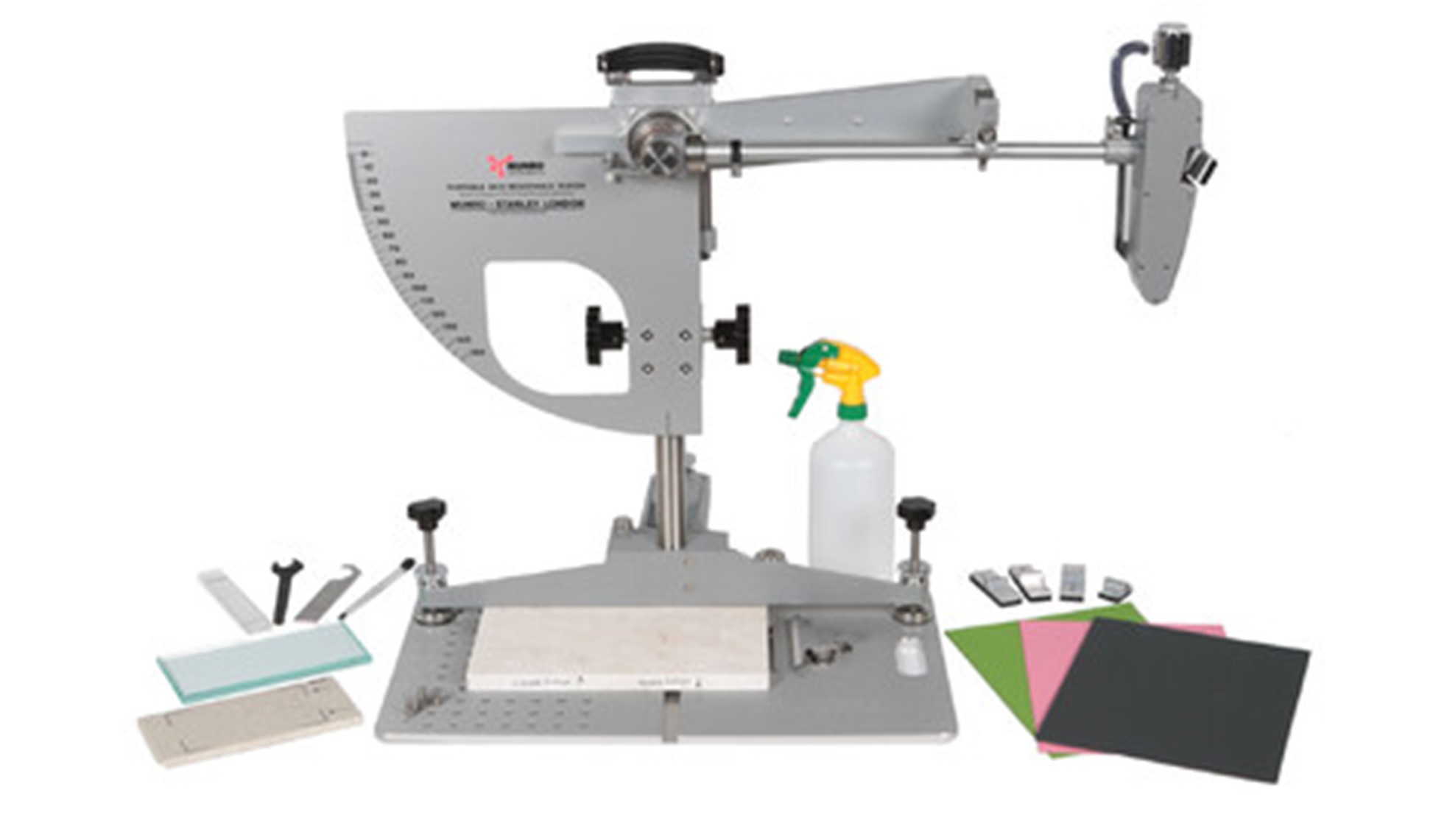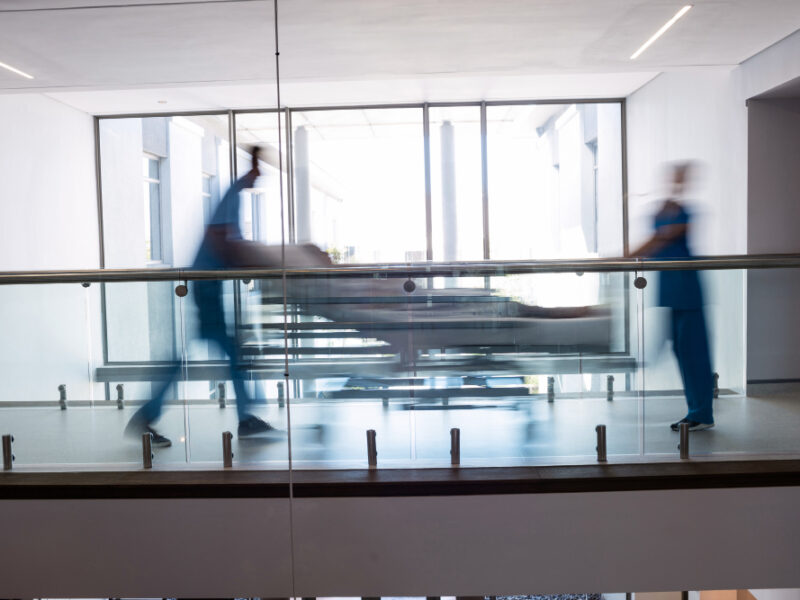If your tiles are slippery, there are several things you can try to make them less slippery:
-Clean the tiles thoroughly with a pH-neutral cleaner. Sometimes, dirt and grime can build up on the surface of tiles, making them slippery.
-Apply a non-slip treatment to the tiles. These treatments are designed to create a rough texture on the surface of the tiles, which can help to improve traction.
-Place non-slip mats or rugs on the tiles. These can be especially helpful in areas where you walk barefoot, such as in a bathroom or near a pool.
-Use a higher grit sandpaper to rough up the surface of the tiles. This can help to create a rough texture that will improve traction.
-Avoid using wax or polish on the tiles. These products can make the tiles slippery when they get wet.
-Make sure that the tiles are dry before you walk on them. Wet tiles can be especially slippery, so it’s important to dry them off after cleaning or mopping.
– Professional slip test service
If none of these methods work, you may need to consider replacing the tiles with a more slip-resistant surface.
What are the causes of slippery floors?
There are several factors that can contribute to slippery floors:
Water or other liquids on the floor: When floors are wet, they can become very slippery and dangerous to walk on.
Dirty or smooth floors: If a floor is dirty or has a smooth surface, it can become slippery when it gets wet.
Wearing the wrong shoes: Shoes with smooth, hard soles or high heels can make it difficult to maintain traction on a slippery floor.
Poor lighting: If a room is poorly lit, it can be difficult to see any hazards on the floor, such as water or spills.
Inadequate warning signs: If a floor is wet or otherwise hazardous and there are no warning signs to alert people to the danger, it can be easy to slip and fall.
Improper floor maintenance: If a floor is not maintained properly, it can become dirty or damaged, which can increase the risk of slips and falls.
Sloping or uneven floors: Floors that slope or are uneven can also be more slippery and dangerous to walk on.
How do you check the floors?
There are several ways to check the floors for hazards that may cause slips and falls:
Look for visible hazards: Check the floor for spills, water, debris, or any other visible hazards that could cause someone to slip.
Test the floor with your hand or a piece of paper: Place your hand or a piece of paper on the floor and try to slide it. If it slides easily, the floor may be slippery.
Walk across the floor: Pay attention to how your feet feel as you walk across the floor. If you feel like you are losing your balance or struggling to maintain your footing, the floor may be slippery.
Check the lighting: Make sure that the room is well-lit so that you can see any hazards that may be present on the floor.
Look for warning signs: If you see warning signs, such as wet floor signs, pay attention to them and take extra caution when walking in that area.
It’s important to regularly check the floors in your home or workplace to ensure that they are safe to walk on. If you find any hazards, clean them up or take steps to fix the problem to prevent slips and falls.
Slip Testing Service
A slip testing service is a company or organization that specializes in evaluating the slip resistance of floors and surfaces. Slip testing is an important safety measure to ensure that floors are safe to walk on and are not too slippery. Slip testers use specialized equipment to measure the slip resistance of a floor or surface in order to determine its safety.
Slip testing services can be used in a variety of settings, including commercial buildings, industrial facilities, and residential properties. They are often used to assess the safety of floors in areas that may be prone to wetness, such as bathrooms and kitchens. Slip testing services can also be used to evaluate the slip resistance of outdoor surfaces, such as sidewalks and ramps.
If you are concerned about the slip resistance of a floor or surface in your home or business, you may want to consider hiring a slip testing service to evaluate it. They can provide you with a report on the slip resistance of the floor and make recommendations for improving its safety, if necessary.
The test is performed using Pendulum Slip Testing
The pendulum slip testing method is a widely used method for evaluating the slip resistance of floors and surfaces. It involves using a device called a pendulum tester, which consists of a weighted arm that swings back and forth over the surface being tested. The tester measures the force required to cause the arm to slip on the surface, which is then used to calculate the slip resistance of the surface.
The pendulum slip testing method is considered to be a reliable and accurate way to measure the slip resistance of a floor or surface. It is often used to test the slip resistance of flooring materials in commercial, industrial, and residential settings, as well as outdoor surfaces such as sidewalks and ramps.
To perform the test, the pendulum tester is placed on the surface being tested and the arm is swung back and forth over the surface. The force required to cause the arm to slip is measured, and the slip resistance of the surface is calculated based on this data. The results of the test are typically reported in terms of a coefficient of friction, which is a measure of the force required to cause the arm to slip. Higher coefficients of friction indicate a higher level of slip resistance.
Slip test in workplaces
Slip testing is an important safety measure that is often performed in workplaces to ensure that floors and surfaces are safe to walk on and are not too slippery. Slip testing is typically required by law in certain industries, such as the food and beverage industry, and is also often performed in other settings, such as office buildings and schools, to ensure that the floors and surfaces meet safety standards.
There are several methods that can be used to test the slip resistance of floors and surfaces in workplaces, including the pendulum slip testing method, which I described earlier. Other methods include the wetted floor slip resistance test, which involves wetting the surface being tested and measuring the friction between the surface and a shoe sole, and the dynamic coefficient of friction test, which involves measuring the force required to cause a person to slip while walking on the surface.
If a workplace is found to have floors or surfaces that are too slippery, steps may need to be taken to improve the slip resistance of the surfaces. This could include cleaning the surfaces more frequently, applying a non-slip treatment to the surfaces, or replacing the surfaces with ones that have a higher level of slip resistance. It’s important for employers to ensure that the floors and surfaces in their workplaces are safe to walk on to prevent slips and falls, which can cause serious injuries.
What are the advantages of Pendulum Slip Testing?
There are several advantages to using the pendulum slip testing method to evaluate the slip resistance of floors and surfaces:
Accuracy: The pendulum slip testing method is considered to be a reliable and accurate way to measure the slip resistance of a floor or surface.
Widely accepted: The pendulum slip testing method is widely accepted and is often used as the standard method for evaluating the slip resistance of floors and surfaces.
Portable: The pendulum tester is portable, making it easy to test the slip resistance of floors and surfaces in different locations.
Cost-effective: The pendulum slip testing method is generally more cost-effective than other methods of evaluating slip resistance.
Overall, the pendulum slip testing method is a reliable and widely accepted method for evaluating the slip resistance of floors and surfaces. It is an important tool for ensuring the safety of floors and surfaces in workplaces and other settings.
How does Skid Resistance Tester work?
A skid resistance tester, also known as a skid tester, is a device that is used to measure the skid resistance of a floor or surface. Skid resistance refers to the ability of a surface to resist slipping or sliding when it is walked on. Skid resistance testers are used to evaluate the safety of floors and surfaces in a variety of settings, including commercial buildings, industrial facilities, and residential properties.
There are several different types of skid resistance testers, but most work by measuring the friction between the surface being tested and a moving object, such as a shoe or a tire. The tester applies a force to the surface and measures the resistance to slipping or sliding. The results of the test are typically reported in terms of a coefficient of friction, which is a measure of the force required to cause the surface to slip.
To use a skid resistance tester, the device is placed on the surface being tested and the testing procedure is initiated. The tester applies a force to the surface and measures the resistance to slipping or sliding. The results of the test are then displayed on the device or recorded for later analysis. Skid resistance testers are typically easy to use and do not require specialized training to operate.



